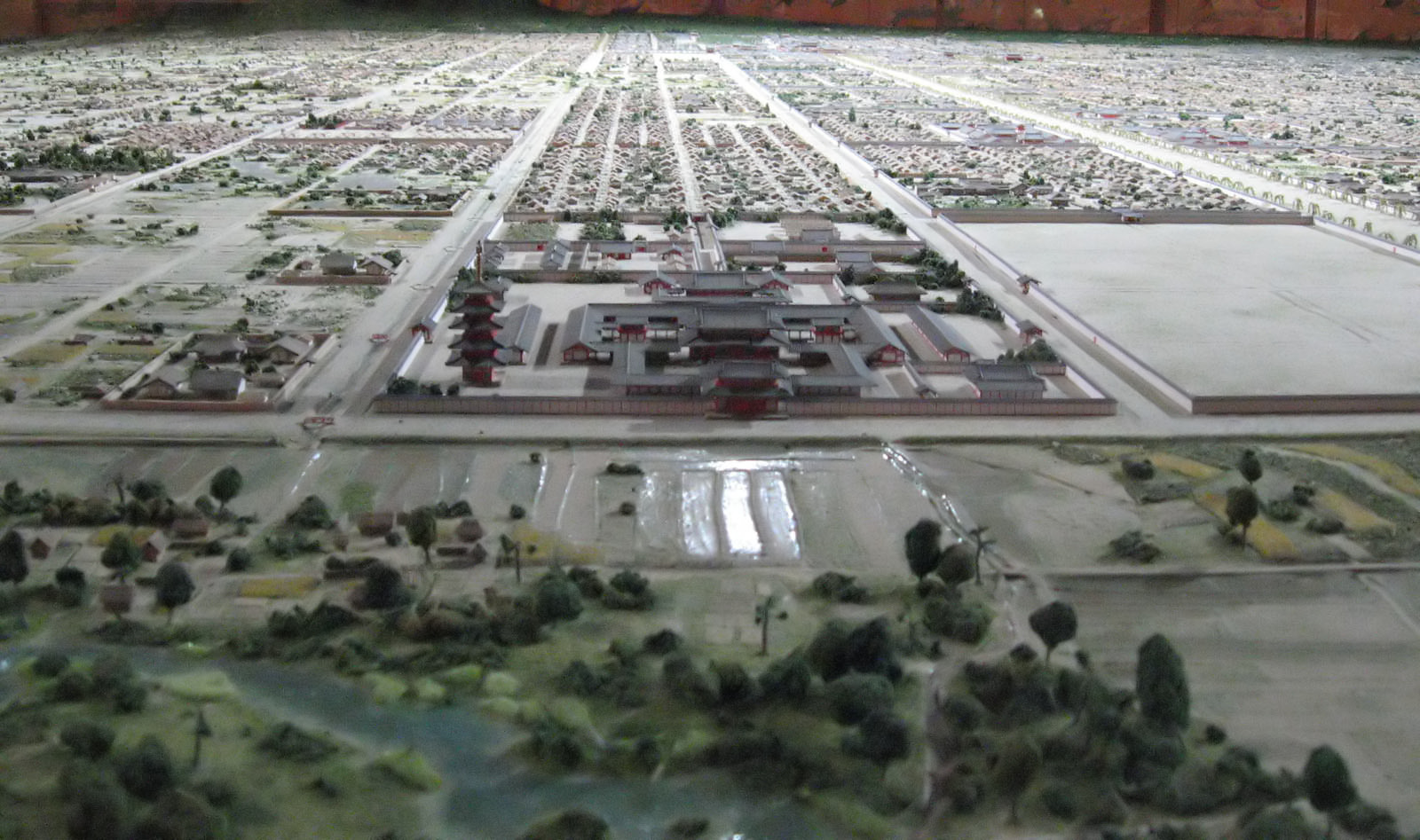This week in the Revised History of Japan: in a bid to strengthen the power of the imperial family, Emperor Kanmu moves the imperial capital one more time to some newfangled place called “Heian-kyo.” Plus, the political battle between the imperial family and the Fujiwara clan takes a few more twists.
Sources
McCullough, William H. “The Heian Court” in The Cambridge History of Japan, Vol II: Heian Japan, ed. Donald Shively and William H. McCullough
Adolphson, Mikael S. “Oligarchy, Shared Rulership, and Power Blocs” in Japan Emerging: Premodern History to 1850, ed Karl Friday.
Images
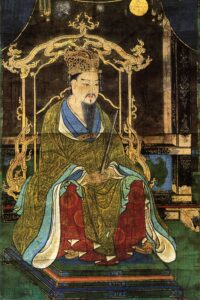
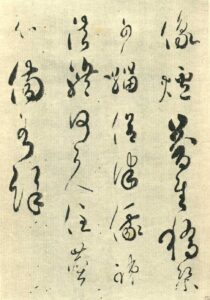
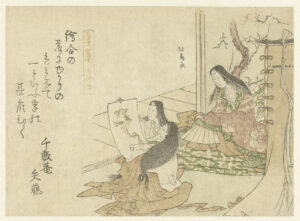
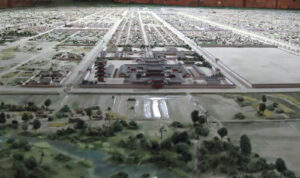
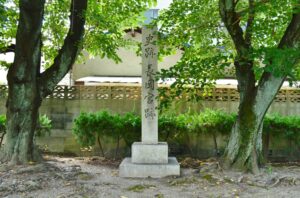
Transcript
The last few episodes have been, politically speaking, a tale of “one step forward and two steps back” for the rule of Japan’s emperors.
On the one hand, in the century and a half since the 645 coup d’etat against the Soga clan and the start of the Taika Reforms, the rulers of the country had done a pretty good job constructing a far more centralized state than had previously existed, and at beginning the process of creating a Chinese-style government bureaucracy (complete with a Chinese-style capital city) to go along with it.
On the other hand, the constant divisions within the imperial family and battles between the emperors and their most powerful subordinate clans had not exactly stopped–indeed, in a certain sense now that the government was stronger than ever there was kind of more to fight over.
Indeed, by the final years of what became known as the Nara period–based on the name of the city used as the capital at that time–the emperor had been largely subjugated by the powerful Fujiwara family, which had placed a puppet ruler from a more complacent line of the imperial family on the throne.
However, the emperors were not done vying for power, and here we come to one of those historical figures who just so happened to be at the right place at the right time: Emperor Kanmu.
Kanmu was born prince Yamabe, from a fairly obscure line of the imperial family. On his father’s side, he was of imperial stock; however, his mother was from another high-ranking clan descended primarily from Korean aristocrats from the old kingdom of Baekje who had migrated to Japan after that kingdom fell to its neighbor and rival Silla.
Since he was not of “full” imperial stock (because, as you may have noticed, there was a good amount of inbreeding within the imperial clan), Kanmu’s branch of the family was considered relatively unprestigious.
However, his branch did have something going for it; his father was descended from Emperor Tenji, a different line of the imperial clan from the one that had dominated politics for the last 100 years (which was descended from Tenji’s brother Tenmu and his wife Jito).
That branch of the imperial line had vied with powerful clans in government (especially the Fujiwara) for control of the state; so, after the death of Empress Shotoku in 770, when the Fujiwara leadership decided they didn’t want someone from the Tenmu branch on the throne, well, you can guess where this is going.
And so Kanmu’s father, known to history as emperor Konin, was plucked from relative obscurity to take the throne. Kanmu himself was not initially named crown prince, and worked instead in one of the imperially sponsored academies set up to train bureaucrats on the Chinese model–however, his father’s preferred heir died suddenly in the mid-770s, and so Kanmu became the new crown prince, and in 781 he became emperor.
Early in his reign, Kanmu remained very much under the thumb of the branch of the Fujiwara clan that came to power after Empress Shotoku’s death, the line led by Fujiwara no Momokawa which had put his father on the throne.
Specifically, his main advisor was Fujiwara no Tanetsugu, Momokawa’s nephew, who was just a year younger than Kanmu and who arrived at court around the same time and had helped pick Kanmu’s father Konin for the throne. Kanmu clearly put stock in Tanetsugu; after his ascension to the throne, he granted Tanetsugu a series of rank increases and postings that saw him attain the position of Chuunagon (middle counselor) by 784.
Tanetsugu was also instrumental to one of Kanmu’s earliest and most important schemes–a plan to once again (wait for it) relocate the imperial capital.
There are a few reasons why Kanmu might have wanted to do this; as was the case before, he did not explain his reasoning. Perhaps he felt the upheaval of the last few decades made Nara spiritually undesirable as a location.
I have to admit, there’s one theory for Kanmu specifically I do find pretty compelling. In the past, powerful emperors had gained a degree of political independence by relocating the capital–moving it away from existing vested interests, and also piling a bunch of expenses onto their courtiers to weaken the great clans financially–and to weaken financial interests in the existing capital which may have tried to influence the court. For example, it had been the powerful empress Jito who moved the capital to Fujiwarakyo almost 100 years earlier.
It’s quite possible Kanmu noticed this pattern, and saw relocating the capital as a way to weaken the powerful interests around the throne–both the clans and wealthy buddhist temples that had grown used to being able to push the throne for more money and support–and thus strengthen his own hand.
His proposed site also fit the bill; he suggested a move to Nagaokakyo, a site northeast of what became modern Osaka, near where the Katsuura, Kizu, and Uji rivers come together to form the Yodo river and flow into the inland sea.
This also just so happened to be an area where his mother’s clan had a great deal of influence, because most of their landholdings were there–as did Fujiwara no Tanetsugu’s mother’s family.
The Nagaokakyo project did not really work out, though Kanmu was in haste to get out of Nara regardless and moved the capital officially one year after work had begun and before most of the buildings were complete.
Nagaokakyo, unfortunately, turned out to be on a floodplain thanks to the nearby rivers, and was very cramped in terms of space by mountains to the west and north.
It was abandoned within a decade, though in the interim it may have served a purpose for Kanmu. You see, in 785, while overseeing construction on Nagaokakyo personally, Fujiwara no Tanetsugu was shot by an arrow–he died of his injuries the next day.
Emperor Kanmu was (given the incomplete nature of his palace) away touring his realm when this happened, but rushed back to the court to launch an investigation. That investigation ended up implicating several members of the most powerful clans at court, particularly what were then the two most powerful rivals to the Fujiwara: the Otomo and Saeki families. It also ended up implicating Emperor Kanmu’s own heir, his younger half-brother whom he’d appointed as crown prince back when his own son was too young to take the throne–that prince ended up being exiled, and responded to the humiliation by starving himself to death.
Tanetsugu’s assassination appeared to be a random act of political violence inspired by court intrigue–and possibly by clans like the Otomo and Saeki feeling threatened by the move of the capital, which would certainly weaken them financially and involve moving into territory where their opponents were politically stronger.
However, the whole thing also worked out quite well for Kanmu; he was rid in one stroke of some of the most powerful opponents to further consolidation of his rule, left the Fujiwara clan (ostensibly his allies, but still dangerous) headless, and got to put his son into the crown prince roll.
This is all so convenient that more than a few have suspected Kanmu of masterminding the whole affair. There’s absolutely no proof of this, and to be honest it doesn’t really fit the image of Kanmu during the rest of his reign; he was educated in the Chinese Confucian tradition of rule through moral example and hard work, which doesn’t really square with political assassination. But certainly, one has to wonder.
What is much clearer is that Kanmu, good administrator that he was, could tell the Nagaokakyo project was not working out well–not to mention a whole slew of natural disasters over the next year after Tanetsugu’s assassination, blamed on the vengeful spirit of the crown prince.
And so a combination of spiritual and practical concern led to looking for another site slightly northeast, given the name Heiankyo, or the capital of peaceful tranquility–though today, we know it better as Kyoto.
This new capital was far better situated to deal with these concerns; it was not as prone to flooding, had far more space to expand, and still easy enough to connect to the inland sea via the Kamo river (which flows into the Katsura). Kanmu probably did not think of himself as establishing a permanent imperial capital; after all, maybe down the line the exact same factors that had led to him moving the capital (like the need to weaken powerful clans or escape spiritual pollution) would lead to another change.
But of course, that isn’t how it worked out; the capital Kanmu established would, for reasons we’ll talk about, remain the home of Japan’s emperors for over 1000 years after this point. And this is probably the act Kanmu is best known for–but it’s not the only one
By the time Kanmu moved the court to Kyoto in 794, he was in his 50s–a classically trained scholar and administrator who exercised more power than probably any emperor before him, given that he had far less to worry about in terms of influence or interference from the noble clans.
Like Tenmu and Jito more than a century earlier, he took advantage of the opening to stack the imperial administration not with powerful aristocrats from the great clans, but with relatives from the imperial family whose loyalties could be trusted. Where such men were not available, he simply left the offices vacant and relied on his own administrative know-how to handle things.
For example, barring the first year of his reign, the position of Minister of the Left (one of the highest roles in the government) was left vacant; after its officeholder died in 796, Kanmu similarly did not fill the role of Minister of the Right for two years, before he handed the job off to a cousin
By the final decade of his reign, not a single member of the once dominant or powerful Fujiwara clan held an office above the middling post of Chuunagon (Middle counselor).
And it wasn’t like the administration suffered for this either; Kanmu relied on his Confucian training to implement a series of reforms to agriculture, religion, and other areas, about which we will have more to say in a bit. But the thing he is best known for is creating one of the most important jobs in Japanese history to deal with a pressing issue.
Very little is known definitively of the non-wajin–that is to say, not ethnically Japanese–peoples of northern Honshu. It’s commonly theorized they were descendants of the old Jomon culture we talked about in episode 501 who remained independent of the continental influence that created the subsequent Yayoi and Kofun cultures. Not much is known for sure about these people, whose lands in the late 700s started around what’s now Fukushima and Niigata prefectures and continued up to the northern tip of Honshu. Even their name is a matter of some controversy; the characters used to describe them in Japanese are commonly read “Emishi”, but other readings are sometimes suggested (Ebisu being one of the most common). We know that, upon meeting two members of this group during a Japanese diplomatic mission in the 600s, the Tang dynasty emperor Gaozong described them as “odd looking” (but odd in what way? We do not know). We know both male and female Emishi (which, by the way, is the reading I’m going to use because it’s the most common) wore their hair in a style resembling “a small mallet”–I assume that’s some kind of bun–and that men could have extremely long beards (some records say as long as four feet). Some earlier records referred to them as “mojin”–the hairy people–and it’s thought that emishi (literally ‘shrimp barbarians’) is a reference to the long whiskers of the men (similar to the antennae of a shrimp).
On the other hand, that “hairy” epitaph may have been a reference to them wearing furs.
Obviously, one of the biggest issues is that we know little about the Emishi from the people themselves; archaeology has given us some clues, like suggesting a mixed hunter-gatherer and agricultural economy similar to the late Jomon/early Yayoi peoples, but not much beyond that. Most of the image of the Emishi comes from Japanese records, and they are not terribly favorable. For example, here is how the Emishi are described in the Nihon Shoki by the legendary emperor Keiko: “It is known that the eastern outlanders are by nature fierce and wild, and that their chief interest is violent assault. Their villages lack chiefs, their settlements lack heads. Coveting territory, they all rob each other….
The fiercest of those eastern outlanders are the Emishi. Men and women live mixed together, nor is there distinction between father and son. In winter they lodge in holes; in summer they dwell in nests. They wear furs and drink blood; eldest and younger brothers are distrustful of each other. Climbing mountains they are like flying birds; running through grass they are like furry beasts in flight. They forget benefits received but always requite wrongs suffered and for that purpose conceal an arrow in their topknots and wear a sword under their robes. Sometimes they band together and invade the border regions; sometimes they spy out opportune times in agriculture and sericulture and rob the people. If attacked, they hide in the grass; if pursued, they go into the mountains. Consequently, they have never since ancient times been subject to the transforming royal influence.”
This speech is given while Keiko is charging one of his ministers to “unsuccessfully” subjugate these barbarians, by the way.
Despite this rather derogatory view, relations between wajin (ethnic Japanese) and Emishi were not all bad. On the frontier, some Emishi communities traded with the local Japanese (and adopted some of their technology in the process), and some Emishi served as allies of Japan’s emperors or even administrators in border lands.
However, tensions had gotten steadily worse over the last century after the Taika Reforms, when the strengthening power of Japan’s state–intended at first to defend against a continental invasion that never materialized–was turned on the Emishi instead.
Things came to a head in 780, when during a campaign against an Emishi stronghold in what’s now Iwate prefecture, an Emishi ally of Japan named Korehari no Azamaro rebelled and defected to the Emishi side. The resulting battle was a devastating loss for Japan’s armies, and subsequent Japanese counterattacks in the 780s and 790s resulted in devastating defeats or inconclusive battles.
This conflict is sometimes called the 38 years war, and as the name implies victory–which did eventually come–was a grueling endeavor for the Japanese side, won by a slow program of claiming the land valley by valley and town by town, and then setting up new fortified outposts to defend the seized territory and serve as a base for expansion forward.
Given the slow burn nature of the strategy, it would take until the late 800s for the Emishi lands in Honshu to be nominally subjugated, and rebellions and uprisings plagued the region for the next several centuries.
Kanmu was one of the chief architects of this first war effort–though of course, given how long subjugating the Emishi would take, completing the conflict would fall to his successors. In this context he is important in that regard for two big reasons. First: the very same year that Kanmu moved the court officially to Kyoto, he also designated one of his officials to serve as an overall commander of the war effort: Otomo no Yakamochi, a distinguished poet and statesman.
Otomo was given a brand new title in his role as war coordinator: sei’i taishougun, or supreme general for the subduing of barbarians. Of course, that’s a bit of a mouthful, which is why we often use the shorter version: shogun.
These early shoguns did not at all resemble the later incarnation of the office (among other things, early on the office rotated every few years instead of being functionally for life). Eventually, of course, claimants to the role of shogun would eventually supplant the role of the imperial government in actually running the country. But we’re still a long ways from that point.
Speaking of which, Kanmu will also be the one to begin a long and slow but important change in how Japan’s military forces were organized. Before this point, the armies of the imperial throne were organized on–wait for it–a model based on imperial China!
Astonishing, I know. None of you saw that coming.
What that meant, in practice, was a system of conscript levies where the state used its census data on individual villages to requisition young men of fighting age, who were called up for service as foot soldiers and who returned to civilian life after the conflict.
This system is comparatively cheap–soldiers are a drain on the economy and don’t produce anything of economic value (the heads of your enemies being priceless in multiple senses). It also allows for organized states to call up extremely large armies.
But conscription is slow–you have to issue call up notices, gather your draftees, and train and equip them. And given that they’re draftees, you won’t have time to teach them how to ride horses (which is expensive and time consuming), so they’re walking everywhere–which isn’t exactly fast.
And that simply did not work very well against the raid-based tactics of the Emishi, who knew the land of Northern Honshu way better than the Japanese and who relied heavily on hit-and-run attacks based out of the mountains and forests of the north.
To address this deficit, starting under Kanmu the throne started to organize a new military force. The notion for how to organize these fighters came from several different places–most notably and utterly astonishingly, imperial China, where the Tang dynasty did maintain a professional mercenary army of fubing, or territorial soldiers. These soldiers received financial incentives–tax benefits and the right to land, for example–in exchange for maintaining themselves at permanent fighting readiness.
For example, part of the income provided by those government programs was to be used to purchase weapons and armor, as well as to pick up a hobby only the rich have time for: horsemanship.
These soldiers could then be called into action at a moment’s notice, and since they were on horseback they could get there much faster.
Kanmu’s newfangled soldiers were stationed primarily in the east, where the fighting was the thickest, particularly in the wide open area known as the Kanto plains.
By the way, I’ve been using the term Kansai for the heartland of the imperial state for a while now; that literally means “west of the pass”, the pass in question being the coastal road that connects the area to the Kanto–east of the pass.
And of course, you might recognize how I’m describing them, because these soldiers would eventually become the basis of the samurai class–though that word is a bit of an anachronism, as it would not be used to describe the professional warrior class for several more centuries.
Still, I’m going to use it because this is intended as an intro series for people who do not necessarily know the Japanese language, and I don’t want to throw any more complicated terminology at you than I absolutely have to. But this is my disclaimer that I’m simplifying a bit by doing so.
We have a pretty clear idea, of course, of the significance of these changes given the warrior rule that is coming a few centuries down the line. Far less clear is the fate of the Emishi themselves. Like pretty much every society in human history, ancient Japan did include the practice of slavery–and war captives were a main source of slaves. It’s fairly clear large numbers of Emishi were taken into the Kansai and other areas of “Japan proper” (so to speak) as slaves for the state, or for powerful households, or temples. The goal was, of course, to exploit Emishi captives, but also to forcibly break up the Emishi population by transferring its members to different areas–essentially “dilluting” Emishi power by spreading population around, a strategy many empires have used throughout history in relation to subject populations.
Those that were not forced into servitude still had to deal with Japanese settlers and administrators coming into their lands–from what we can tell, they were slowly forcibly assimilated over the course of centuries, though well into the middle ages there were a few prominent local families that at least claimed to be of Emishi descent in the north.
I think it is fair to say that by the time of Emperor Kanmu’s death in 807 he had cemented a legacy for himself as one of Japan’s most influential monarchs–beginning the conquest of the north in earnest, relocating the capital, weakening the great clans, and strengthening the throne’s power in the offing.
But almost immediately after his death, the balance began to tilt once again. Three of Kanmu’s sons would sit on the throne–Emperors Heizei, Saga, and Junna would reign collectively from 806-833–and during their rule, the Fujiwara clan slowly began to claw back some of its former prestige and influence.
The road to Fujiwara restoration was not an easy one, largely because by this point the Fujiwara family faced one of the same problems that had begun to plague the imperial family.
The Fujiwara were wealthy and prestigious, and living in a society where one of the expectations of wealthy and prestigious people was that the male heads of household have multiple concubines to demonstrate their power. Which also meant a LOT of children, and absolutely sprawling family trees capable of growing very rapidly to a level capable of confusing the hell out of even the most veteran history podcaster.
By the early 800s, the Fujiwara family had begun to fragment along these competing and sprawling lineages into four distinct branches we call respectively the Northern, Southern, Capital, and Ritual Fujiwara (Hokke, Nanke, Kyouke, and Shikike in Japanese). These branches were, of course, all related, but anyone who’s been to a tense family reunion knows that blood relations can be….complicated, let’s put it.
The Southern Branch had been the dominant one up until this point, and much of the reigns of Heizei and Saga went by with the other Fujiwara branches trying (fairly successfully, mind you) to tear it down.
Kanmu’s main wife, for example, had actually been a Fujiwara, but a Shikike Ritual House one who shared his distaste for the Southern Fujiwara.
Meanwhile, the imperial family enjoyed a period of relatively strong leadership. Emperor Heizei has a…mixed historical reputation, let’s put it. It’s possible much of that was because he was not a man terribly interested in the refined cultural arts that had come to mark a man of character among Japan’s elite (about which more in a future episode), but it’s also hard to escape the sense he was not a particularly great ruler in his own right.
He nearly lost his spot as crown prince because he tried to have sex with his concubine’s mother (also a Fujiwara, but not from the Southern branch), and his reign was marred by several scandals (the biggest of which was a suspected coup attempt that may or may not have just been some good old fashioned political bloodsports to remove rivals at court).
However, Heizei was not on the throne long; in 810 he was forced to abdicate due to ill health, and removed himself to Nara. He made a brief bid to restore himself to power, issuing orders from Nara as though he had never abdicated and even attempting to force the court to relocate back to the old capital–but nobody followed his dictates.
The whole thing was blamed primarily on Heizei’s Fujiwara concubine (probably a case of an approach inherited from the Chinese Confucian historical tradition, where everything bad in government was blamed on either eunuchs or women), who was forced to commit suicide–Heizei himself lived quietly in Nara for the rest of his life.
His successor was his half-brother Emperor Saga (who used the whole debacle to boot Heizei’s son from the role of crown prince in favor of another half-brother), who by contrast is VERY well remembered. Saga would call the shots through his own reign and, after his abdication in 833, continued to call the shots during the reign of his half-brother Junna and his own son Ninmyou, dominating the government until his death in 842.
Saga did a great deal to marginalize the Fujiwara to the widest extent possible, avoiding any marital relations with the family (at least for a while;more on that in a second) and keeping its members out of high office where possible. By 841, of the 13 highest offices within the imperial bureaucracy, only 4 were held by members of the Fujiwara clan, and most of the rest were held by members of the imperial family or its various offshoots.
Like his father, Saga was also an admirer of Chinese models of government and emphasized the promotion of men of scholarly talent into positions of power rather than those from elite families. He also worked hard to build the imperial family an independent base of economic power, setting up estates in the provinces controlled by the imperial family to finance the court directly in addition to its tax revenues.
The first half-century after the founding of Kyoto is thus a period of imperial power and prestige, similar to the reigns of Tenmu and Jito more than a century earlier, when the emperors were able to restore some sense of independent political power and authority
But it was not to last. Indeed, the balance would tip again within literally a week of the retired emperor Saga’s death, in a moment known as the Jouwa incident–because it took place in the 9th year of the era of Jouwa, roughly acquiescing to harmony.
Over the course of the 830s, a member of one of the Fujiwara branches had managed to claw back some of the power lost by his family. His name was Fujiwara no Yoshifusa, and he was the head of the Hokke, or Northern branch, of the Fujiwara family.
Alongside his wife Tachibana no Kachiko, a talented and charming woman from the powerful Tachibana clan, he managed to gain the favor of Saga, to the point that Saga arranged for Yoshifusa’s younger sister to become a concubine of his son Emperor Ninmyo. The two had a son of their own, prince Michiyasu.
However, as much as Saga may have been willing to tolerate a Fujiwara marrying his son, he did not want this boy inheriting the throne. Instead, he made his son maintain a cousin, Prince Tsunesada as heir to the throne.
What happened next is a bit unclear. The official histories say that the day after Emperor Saga’s death, Tachibana no Kachiko was made aware of a planned coup d’etat by that Prince Tsunesada to seize the throne from Ninmyo, who he feared would disinherit him without Saga there to restrain him. Naturally, she informed her husband, who used his political connections to pre-empt the coup within one week and capture the central plotters (conveniently, most of his political opponents at court).
As you might imagine, this is as the youth say somewhat sus, and it’s commonly suspected that it was in fact Kachiko and Fujiwara no Yoshifusa who initiated the whole incident–with the help of Emperor Ninmyo, who wanted to replace the current crown prince with his own flesh and blood.
The coup plotters were killed or exiled, and Tsunesada was disinherited; he would eventually go on to become a Buddhist monk.
It would take a few more decades after this point, but from this time onward the Northern Fujiwara would come to dominate the court.
How, you might ask? Well, eight years after this moment Emperor Ninmyo himself would pass away, and the throne would pass to his preferred crown prince Michiyasu–known to history as Emperor Montoku, and also the grandson of Fujiwara no Yoshifusa.
Montoku was 16 when he took the throne–so a teenager, in essence–and fairly easy for Yoshifusa (who was in his 40s) to control. Yoshifusa took full advantage, surrounding the emperor with Fujiwara concubines and manipulating discussions around the succession to ensure that his own preferred candidate (a child of one of those Fujiwara concubines) was named crown prince.
Then, all Yoshifusa had to do was wait; Montoku was not a particularly healthy young man, and increasingly stepped away from politics before dying of an illness in 858.
At this point, Yoshifusa could install his preferred candidate–the eight year old crown prince, known to history as Emperor Seiwa, upon the throne. And obviously, with the emperor being eight, Yoshifusa could be the one calling the shots from behind the scenes. But he took it one step further.
Seiwa was not the first boy emperor in Japanese history by any shot, and as had been the case in monarchies around the world, previous youthful emperors had been supported by regents–known as Sesshou, who would rule on their behalf until they came of age. Previously, however, all Sesshou had come from the imperial house–because of course, the issue with regencies is the temptation for the regent to usurp the very throne they are supposed to be protecting.
Yoshifusa, however, arranged for the young Emperor Seiwa to appoint him as regent–the very first time someone outside of the imperial line had done this.
And once Yoshifusa had his Northern Fujiwara foot in the door, well, things continued predictably from there. Fujiwara no Yoshifusa would remain the sessho–regent–for the remainder of his life. After his death in 872 his adopted son, Fujiwara no Mototsune, would continue the practice, and even advance it by creating a new title, kanpaku, for regents serving adult emperors.
After Mototsune’s death, there was a 20 year period without a regency owing to some pushback by other clans, but starting in 909 the practice was restored. For the next century and a half, the twin posts of sessho and kanpaku would be used by the Northern Fujiwara to dominate the government–in Japanese, you sometimes hear this called sekkan seiji, with sekkan being a combination of sessho and kanpaku and seiji referring to politics.
Thus, an age of governance in Kyoto that had begun in order to restore the power of the imperial family resulted in them being even more politically marginalized than ever before–emperors during this period largely did not rule, and instead were encouraged to focus on ritual, religious, and cultural pursuits while their regents ‘eased the imperial mind’ by ‘handling this-worldly distractions.’
It’s something of an irony, though, that this period of imperial marginalization–which later nationalists historians would lambast because those behind it clearly did not sufficiently revere the authority of the throne–is also considered to be a cultural golden age of Japan’s history. We’ll talk more about that going forward.
